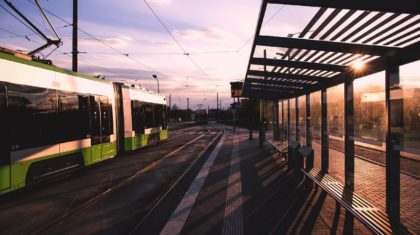
Blog 1 of 3 —Reflections on Bike Safety
Between March and June, 2018, my wife and I bicycled nearly 5,000 kilometers riding through 6 countries in Southeast Asia, including Vietnam, Laos, Cambodia, Thailand, Malaysia and Singapore. Before the trip started, one of my fears was that the roads were going to be really dangerous and that our preferred mode of travel (bicycle) was going to put us at risk of injury. I had read the stats and knew that ‘vulnerable users’ (pedestrians, cyclists and motorcyclists) were over represented in accidents in SE Asia and account for approximately 50% of road traffic deaths in the region.[1] The figure below presents road traffic fatalities from the Southeast Asia region for 2013.

Such a high death toll among vulnerable users is a function of a variety of factors, including higher rates of vulnerable users on the roadways, roadway design, driver behavior and national and local policy and enforcement. While we were fortunate on our trip and largely escaped any incident (my wife did crash her bicycle in Thailand while being chased by a dog!), many are not and I will share some observations from our trip in this post.
Vietnam
Vietnam’s cacophonous traffic is often intimidating to foreigners, but during our five weeks of riding in Vietnam we amazingly saw very few accidents. Scooters and motorcycles routinely run red lights, merge into traffic without looking, often travel with two to four other people on the bike and almost nobody wears a helmet. The roads are not particularly wide, traffic lanes are treated as advisory and clearance gaps for passing are much narrower than I was accustomed to. Everyone loves their horn in Vietnam and uses it incessantly to alert other road users that they are coming through. After several weeks in the saddle, the rules and norms that govern movement started to reveal themselves — one of which was to never stop moving no matter how slow you’re going. It was also clear that the largest vehicle ruled the road and everyone else should get out of the way. In cities and towns, everyone drives fairly slowly anticipating unpredictable behavior from other road users. The slow speed of traffic in cities is the key element that seems to make everything work. Outside of cities, drivers can be very aggressive particularly when passing other vehicles on two lane roads as we witnessed a number of near misses. Some regions in Vietnam had great roads for cycling such as the Mekong Delta as pictured below.

Laos and Cambodia
In Laos and Cambodia, both of which are much less populated and developed than Vietnam, there were far fewer people on the roadways so it was a more relaxed, less frenzied environment to bicycle tour. We spent nearly one month riding in Laos and Cambodia and the roads were often in poor condition (e.g., poor surface, little or no shoulder, etc.) which made the cycling challenging in its own way. Laos and Cambodia also had a considerable amount of road and development related construction which contributed to high rates of trucks on the roads. Despite the poor roads and high numbers of trucks, the riding conditions in both Laos and Cambodia often felt safer and was certainly much less stressful as compared to Vietnam.


Thailand and Malaysia
Once we crossed the border from Cambodia into Thailand, we had to switch to left side riding which was pretty easy for us after spending nearly six years living in New Zealand. In Thailand, the roads immediately improved and the speed of traffic increased as well. The caution and slow speeds that seemed to go with the ambiguity of poorly marked roads and disregard for traffic laws no longer seemed to apply in Thailand. While Thai drivers mostly seemed to comply with the road rules, they also drove much faster which is almost certainly a leading contributor to their high traffic fatality rates. The roads are also designed for higher speeds and we found ourselves riding on very busy arterial highways on numerous occasions. Fortunately, Thailand has an extensive network of B roads so it wasn’t too difficult to get off the busier roads and find a quieter, more cycle friendly road to get to our destination.
In Malaysia, the roads were even more oriented towards the private vehicle although drivers appeared to be less aggressive as compared to Thailand. On numerous occasions, we found ourselves riding on an extremely busy motorway environment with high speed traffic and limited access to the surrounding road network. Due to this sterile, concrete-dominate environment, the bike touring definitely wasn’t as interesting although it was fairly easy to ride a decent distance and we also required minimal bike maintenance in Malaysia due to the high-quality road conditions.
All in all, we found drivers in Southeast Asia to be more respectful and courteous towards us as compared to our many years of cycling in the US, New Zealand and many other more developed countries. We thought this was largely due to the sheer numbers of other bicyclists and other two wheeled vehicles on the road (i.e., safety in numbers). Many of the countries we rode through had also relied upon cycling for their primary mode of transportation in the not so distant past so that seemed to result in motorists giving us more respect on the road. Lastly, the speed of motor vehicles was often fairly low which also contributed to our higher sense of safety as bicycle tourers in Southeast Asia.
In terms of opportunities for creating a safer cycling environment in SE Asia, there were a couple specific measures that stood out to me. First of all, huge gains could be made simply by enforcing existing traffic laws. This should reduce the frequency with which people run red lights, speed and drive aggressively and dangerously. Secondly, providing a continuous, well paved shoulder along well traveled roads would provide cyclists with a big improvement over current conditions especially in Vietnam, Cambodia and Laos. Lastly, SE Asia is at risk of losing their strong bicycle culture as the population continues to migrate away from bicycling and towards motorized transportation options. To preserve the ‘safety in numbers’ benefit, it is critically important that countries prioritize bicycling as a viable mode of transportation.
See Sam’s second blog post, Reflections on Bicycle Infrastructure, and his third, Reflections on the People and the Culture.
[1] http://www.who.int/violence_injury_prevention/road_safety_status/2015/Road_Safety_SEAR_3_for_web.pdf


